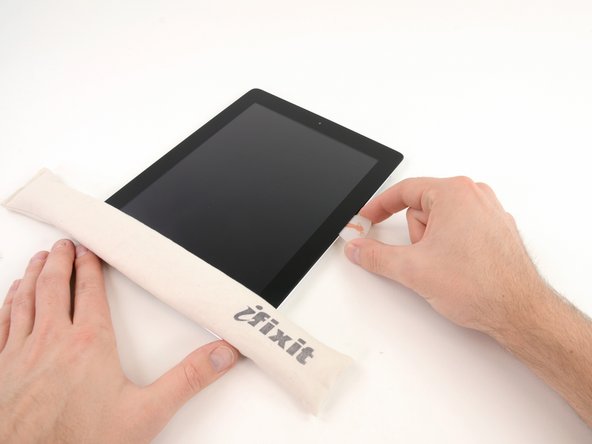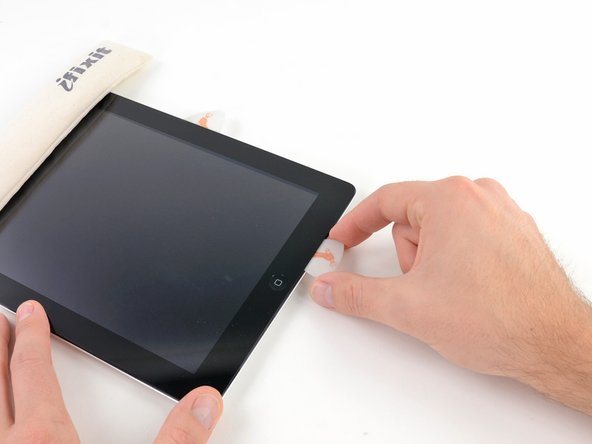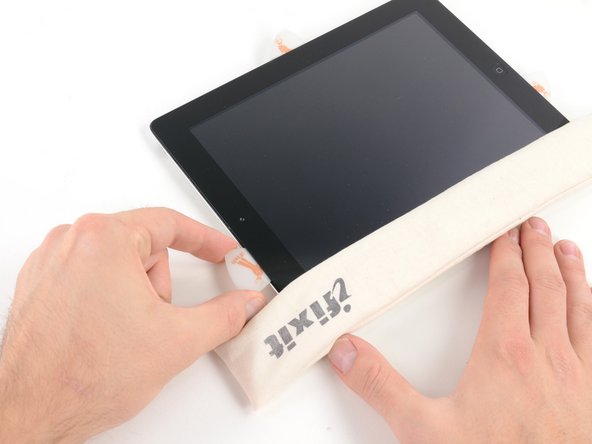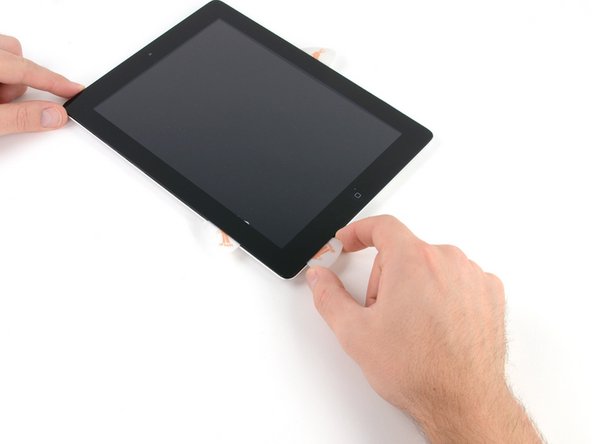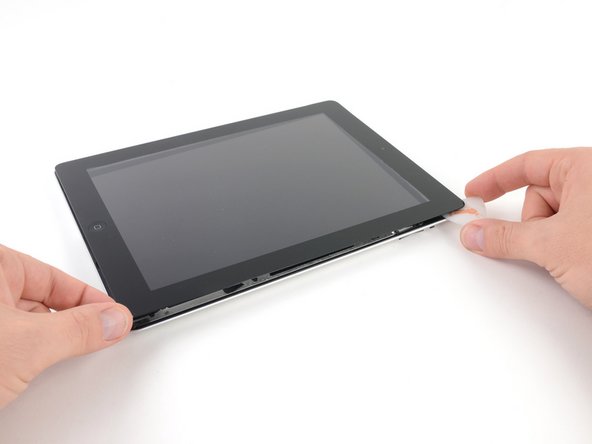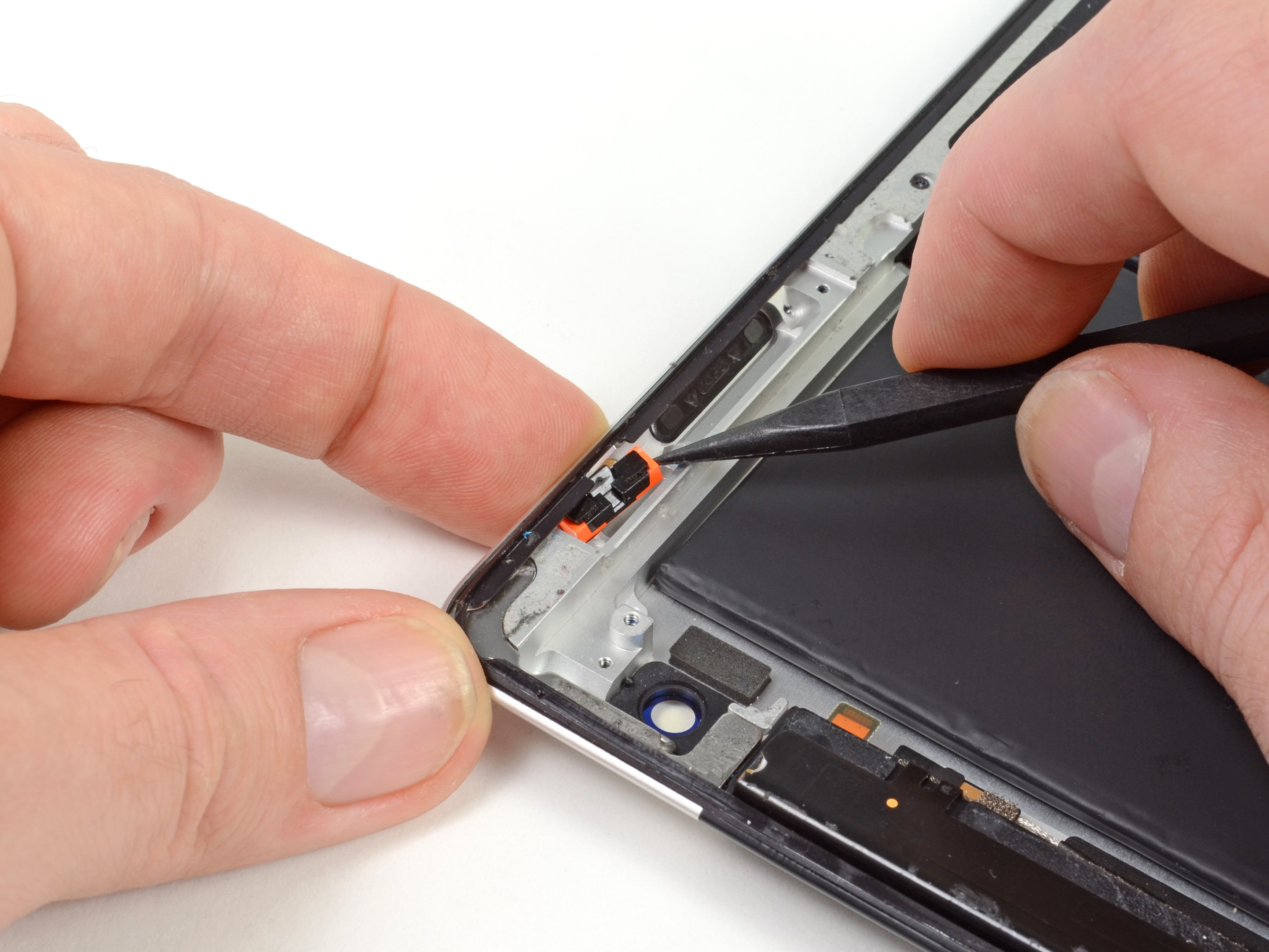iPad 3 4G Logic Board Replacement
Duration: 45 minutes
Steps: 45 Steps
Follow this guide to swap out the logic board like a pro.
Step 1
For carousel microwaves: Check that the plate is spinning smoothly. If your iOpener gets jammed, it might overheat and cause a burn. Keep it moving for the best results!
Before you start, give your microwave a quick clean—any leftover grime at the bottom might hitch a ride on the iOpener and make things messy.
- Pop the iOpener right in the middle of your microwave, making sure it's cozy and centered.
Tools Used
Step 2
Don't overdo it with the heat! Too much heat can make the iOpener pop. Keep it below 100˚C (212˚F) for a smooth repair.
If the iOpener looks a little puffed up, don’t touch it! Safety first.
If it’s still too hot in the middle to touch, just hang tight and let it cool down a bit more before you try again. A perfectly heated iOpener will stay warm for up to 10 minutes, giving you just enough time to prep for the next step.
Microwave wattages vary, so your heating time might need a little tweak. You'll know the iOpener is ready when it feels just a tad too hot to hold comfortably.
- Warm up the iOpener in the microwave for about thirty seconds.
- As you work, if the iOpener starts to cool down, just pop it back in the microwave for another thirty seconds to keep it nice and toasty.
Tools Used
Step 3
The iOpener can get pretty toasty, so handle it with care. If it feels too hot to touch, grab an oven mitt for a safer grip.
- Carefully take the iOpener out of the microwave, grabbing it by one of its flat ends to keep your fingers safe from the hot middle part.
Tools Used
Step 4
Heads up! The iOpener will be super hot, so make sure to grab it only by the end tabs to keep your fingers safe.
No microwave? No problem! Heat up your iOpener by placing it in boiling water instead. It's a quick and easy workaround.
- Grab a pot or pan and fill it with enough water so your iOpener can take a full dip.
- Bring the water to a lively boil, then switch off the heat.
- Drop the iOpener into the hot water and let it soak for 2-3 minutes, making sure it’s completely submerged.
- Use tongs to fish out your now-toasty iOpener from the water.
- Give it a good dry-off with a towel so it’s nice and ready to go.
- Your iOpener is all set! Need to warm it up again? Just repeat the process: boil the water, turn off the heat, and let the iOpener soak for 2-3 minutes.
Tools Used
Step 5
Put on some safety glasses to keep those peepers safe, and handle the LCD screen with care to avoid any oops moments.
This helps keep those sneaky glass shards in check and adds some solid support while you pry and lift the display.
- Got a cracked display glass? No worries! Just make sure to prevent any further damage and avoid hurting yourself by taping up the glass.
- Grab some clear packing tape and lay overlapping strips over your iPad’s screen until it's fully covered.
- Now, stick to the guide as closely as you can. But hey, once that glass starts to crack, it's probably going to keep going, so don't be afraid to grab a metal prying tool and gently scoop it out when needed.
Step 6
Heads up! You're going to be working with some glass here, so make sure to rock those safety glasses to protect your eyes from any surprise flying shards. Stay safe, stay smart!
- Place the iOpener flat along the right edge of the iPad, pressing it gently to make sure it sticks nicely to the surface.
- Let it hang out there for about 90 seconds to warm things up before you try to pop open the front panel.
Tools Used
Step 7
It might take a bit of effort to slide the tip of the opening tool between the glass and plastic. Just take your time, be gentle, and gently wiggle the tool back and forth until it fits in place.
- You'll notice a tiny gap in the adhesive ring at the top right corner of the iPad, about 2 inches (5 cm) down from the top edge. Time to make that small flaw work for you.
- Carefully align your tool with the mute button. Gently insert the tip of your plastic opening tool into that tiny gap between the front glass and the plastic bezel. You only need to get the very tip in, just enough to widen that small crack.
Step 8
- Place the tool carefully in the sweet spot—right between the plastic display bezel and the front panel glass. Make sure it’s snug, but don’t go too deep!
Step 9
- Gently keep the tip of your plastic opening tool tucked between the front glass and plastic bezel, then slide a plastic opening pick right next to it in the gap. Easy does it!
Step 10
- Gently slide the plastic opening tool out from the iPad, then carefully nudge the opening pick a bit deeper under the front glass—about half an inch should do the trick.
Step 11
- As you carefully loosen the adhesive on the right side of the iPad, give your iOpener a quick warm-up and pop it back on the bottom edge to keep things toasty.
Tools Used
Step 12
This adhesive is tough stuff, so get ready to apply some muscle—but take it slow and steady!
If you spot the tip of your opening pick peeking out beneath the front glass, gently pull it back a bit. Going in this deep with the pick won’t cause harm, but it might leave some sticky adhesive marks on the LCD.
- While the bottom edge is getting cozy with the heat from the iOpener, start gently peeling off the adhesive along the right edge of your iPad.
- Carefully slide the opening pick down the side, letting it work its magic and release the adhesive as you go.
Tools Used
Step 13
If the iPad has cooled down a bit while you were working on it, you might need to move the heated iOpener back to the right edge as you peel off the adhesive. It all depends on how much time it's had to cool down!
- If your opening pick gets caught in the adhesive, try gently "rolling" it along the iPad’s edge to keep loosening that sticky stuff and make progress.
Tools Used
Step 14
- Before you pull out that first opening pick from the bottom corner, slide a second pick under the right edge of the front glass to keep the adhesive from sticking back together.
- Warm up the iOpener again, then shift it over to the top edge of the iPad to get things ready for the next step.
Tools Used
Step 15
The Wi-Fi antenna is located on the bottom right edge of the rear case and is secured with screws and a cable. Keep in mind, the antenna's position is a bit tricky, so go slow and steady. One wrong move could cause some permanent damage, and that’s not what we want. Handle with care!
- Alright, folks, it's time to tread lightly! The next few steps are a bit delicate, so let’s keep our cool.
- We need to carefully free the adhesive that’s holding the antenna to the front panel, all while avoiding any mishaps with the fragile bits connecting the antenna to the bottom of the iPad. So, let’s take it step by step and make sure we do this right!
Step 16
Be careful not to slide the pick past the bottom right corner—going too far might mess with the Wi-Fi antenna. We don’t want any tech hiccups!
- Gently slide the opening pick around the bottom right corner of your iPad to break the adhesive seal. A little patience here goes a long way!
Step 17
Careful now! Slide the opening pick along the bottom right edge of the front panel, but watch out—the Wi-Fi antenna is hanging out super close to the corner and can get sliced if you’re not gentle with the adhesive.
Don't yank the pick all the way out from under the front glass! Just pull it out a tiny bit, leaving about 1/8" (3 mm) of the tip still snugly under there. You got this!
- Gently slide the tip of your opening pick along the bottom edge of the iPad to loosen the adhesive holding down the Wi-Fi antenna. Take it slow and steady!
Step 18
- Once you're past the Wi-Fi antenna (about 3" or 75 mm from the right edge, just beside the home button), slide your opening pick all the way in until it's fully inserted.
- Now, gently slide the pick to the right. This will release the adhesive holding the Wi-Fi antenna in place on the front glass.
- The antenna is secured at the bottom of the device with screws and a cable. This step ensures the antenna comes free from the front panel without causing any damage when you remove it. Easy, right?
Step 19
Keep your iOpener chill—heat it for no more than a minute at a time, then give it a couple of minutes to cool off before the next round.
If the adhesive along the bottom edge has cooled down too much, give the iOpener another warm-up to soften things up where you're working.
- Keep peeling back the adhesive along the bottom of the iPad, gently pulling the opening pick far enough to get around the home button. Once you're past it, slide the pick in about 1/2 inch (10 mm) to make sure you're all set.
Tools Used
Step 20
When working on iPad 4 models, slide your pick in no deeper than 1/2 inch (10 mm) here to keep that home button ribbon cable safe and sound.
- Keep sliding that adhesive remover tool along the entire bottom edge of the iPad to free up the glass.
- Leave the opening pick tucked gently under the front glass near the home button to keep things open and ready.
Step 21
- Heat up the iOpener in the microwave, then place it gently on the left edge of your iPad. This will start softening up that stubborn adhesive in no time.
Tools Used
Step 22
If the adhesive has cooled down too much, pop the iOpener back on the top edge and keep at it. If the iOpener itself has lost its heat, just give it another warm-up.
- Start by sliding the opening pick gently along the top edge of your iPad, easing it out just enough to go around the front-facing camera bracket.
- This part can be a bit stubborn because the adhesive here is pretty thick. You might need to apply a little extra force, but take your time—patience is key! Be careful not to slip and end up with a surprise scratch or a bruised iPad.
- If your pick starts to stick in the adhesive, try giving it a little roll, like we show in step 9, and it should glide much easier.
Tools Used
Step 23
If the adhesive's warm enough, feel free to take the iOpener off the iPad to make things easier. But if it's still pretty sticky, no worries! Just reheat the iOpener and rest it on the left edge while you work your magic.
- Peel back the adhesive along the top edge of the iPad, and gently work the opening pick around the top left corner. Take your time, and remember, patience is key to a smooth repair!
Tools Used
Step 24
The digitizer cable hangs out about 2" (50 mm) up from the bottom edge of your iPad. When sliding the pick along, pause once you hit around 2.25" (60 mm) from the bottom to avoid going too far!
- Gently slide the opening pick along the left edge of the iPad to loosen the adhesive bit by bit. Heads up: the adhesive is pretty thin on this side because of the digitizer running along the whole left edge. Keep the pick shallow—no deeper than 10 mm (about 1/2 inch)—so you don’t accidentally mess up the digitizer.
Step 25
The digitizer cable is super close to the bottom of the iPad—just about 1 inch (25 mm). Take it slow and steady, and be extra careful not to cut through this cable.
- With the opening pick still hanging out under the bottom edge of your iPad, carefully work your way around the bottom left corner to loosen the adhesive. Take your time here—patience is key.
Step 26
Sometimes the adhesive around the edge of the iPad likes to play sticky again. If that happens, gently slide a pick under the spot where the front glass is still holding tight and carefully 'cut' through the adhesive to free it up.
- Grab an opening pick and gently wedge it under the bottom right corner of the iPad, then lift it up enough to grab it with your fingers.
Step 27
Watch out for any sticky glue still hanging on! Use an opening pick to carefully slice through any adhesive keeping the front panel stuck down.
- Grab your iPad by the top and bottom right corners, and give the front glass a gentle twist away from the device. You've got this!
- When putting everything back together, don't forget to whip out a microfiber cloth and some compressed air to zap away any pesky dust or fingerprints from the LCD before you pop the glass back on. A little TLC goes a long way!
Step 28
- Grab your trusty screwdriver and take out the four 2 mm Phillips #00 screws holding the LCD in place on the aluminum frame.
Step 29
Handle the LCD with care! The ribbon cable is a bit delicate and can snap if you bend it too much. Take your time and be gentle with it.
- Grab a plastic opening tool or spudger and gently pry up the right edge of the iPad's LCD.
- Swing the LCD open like a door on its left side and let it rest carefully on top of the front panel.
Tools Used
Step 30
- Gently lift the tape off the LCD ribbon cable connector using the tip of your trusty spudger.
Tools Used
Step 31
- Gently flip up the little retaining flap on the LCD ribbon cable’s ZIF connector.
- Carefully pull the LCD ribbon cable out of its socket on the logic board using your fingers or tweezers.
- If the LCD screen doesn’t light up after reconnecting the ZIF connector, try force restarting your iPad by holding down the power button and home button together for about ten seconds until the Apple logo appears.
Step 32
- Carefully lift the LCD away from the front panel—just don’t touch the front glass to keep it nice and safe.
Step 33
- Gently use the tip of your trusty spudger to lift that tape holding the touchscreen ribbon cable down on the logic board—easy does it!
Tools Used
Step 34
- Gently lift the little flap on both touchscreen ribbon cable ZIF connectors to unlock them.
Step 35
- Gently use the flat end of your spudger to pry up the adhesive holding the digitizer ribbon cable in place.
- Carefully slide the digitizer ribbon cable straight out from its connectors on the logic board.
Tools Used
Step 36
- Gently peel back the touchscreen ribbon cable, then use the flat end of a spudger to carefully pop loose the adhesive holding the cable to the rear aluminum case.
Tools Used
Step 37
- Gently wiggle the touchscreen ribbon cable free from its snug spot in the aluminum frame using just your fingers.
- Carefully lift the front panel off the iPad and set it aside.
Step 38
If you spot any electrical tape hiding the Wi-Fi antenna, speaker cable, or dock connector cable, go ahead and peel it off carefully.
Step 39
- Peel off the piece of electrical tape covering the headphone jack assembly cable connector. It’s like unveiling a tiny hidden treasure, just with less glitter.
- Grab your trusty spudger and gently lift the retaining flaps on both ZIF connectors holding the headphone jack cable to the logic board. No rush—just a little flip and you're good to go!
Tools Used
Step 40
- Gently slide the flat end of your spudger under the headphone jack cable, popping it free from the adhesive holding it to the aluminum frame. Nice and easy, you're almost there!
- Now, just give the headphone jack cable a smooth, straight pull to disconnect it from the logic board. You've got this!
Tools Used
Step 41
- Gently peel back and lift off the tape that’s holding down the SIM board cable ZIF connector.
- Flip up the little retaining flap on the SIM board cable ZIF connector to unlock it.
- Carefully use the tip of a spudger to pull the SIM board cable straight out from its socket on the logic board.
Tools Used
Step 42
Gently pry underneath the connector, not the socket itself! If you mess with the socket, you might end up with some serious damage. Patience is key!
- Carefully unplug these connectors from their spots on the logic board:
- Wi-Fi antenna cable
- Speaker connector cable.
- Dock connector cable.
Step 43
One of these screws, located at the top of the logic board, is hiding under the headphone jack assembly cable. Gently hold the cable aside so you don’t snag it while you remove and replace this sneaky screw.
- Start by unscrewing the seven screws that are holding the logic board in place against the rear aluminum panel.
- Six screws are 2.1mm Phillips #00
- One screw is 2.5mm Phillips #00
Step 44
- Grip the logic board along the edge closest to the dock connector, then gently slide it down toward the bottom of the iPad.
Step 45
- Carefully flip the logic board over, keeping an eye out so no cables get caught.
- Gently use the tip of a spudger to pop off the three antenna connectors from their spots on the logic board.


























